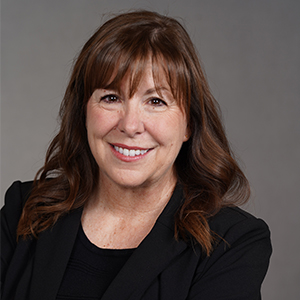Editor in Chief Sarah Wheeler sat down with Sridhar Sharma, executive vice president and chief information officer at Mr. Cooper, to talk about how the company is using machine learning and artificial intelligence to increase productivity while making their customers happier.
Sarah Wheeler: You came into the mortgage space about nine years ago after leading teams at NTT Data and Infosys. Were you surprised at where the mortgage industry was technology-wise? And how do you feel about where we are now in relation to other industries?
Sridhar Sharma: I would say a little bit surprised, but, then you quickly pivot into looking at that as a fantastic opportunity. So we got the opportunity to build our digital platform from the ground up back in 2016-2017. We are one of the most advanced digital platforms out there and we still continue to invest — the journey’s not done. If I look at what other industries have been able to accomplish, that represents opportunity for this industry to get there and gives us inspiration.
SW: What differentiates your tech?
SS: Well, speaking of drawing inspiration from other industries, Elon Musk is a pretty controversial figure, but he made this comment when he was trying to get the manufacturing for Tesla off the ground: one learning was “don’t automate first.” You might look at technology as diving headfirst into automation, but in his book he talks about automating last. Now that might sound counterintuitive, but if you just automate the process that you have today, you’ll just get the same results faster — good or bad. Instead, if you take the opportunity to adjust the process, tweak the process, sometimes flip it on its head, and then you automate — you get much better results.
We do not look at what differentiates our tech alone. We look at the process that goes with it. And sometimes it means we switch the process around so that the tech can be even more effective. I can give you an example. We’ve invested in automation, workflows, data and dashboards. But today, I generally question: Why do we need a dashboard? A dashboard presents information for a human to look at and take action. Why can’t I just take that action?
If I can codify what somebody looking at a dashboard is thinking, I can skip that step and take that action. This is evolution. Four years ago, getting the right information at the right time for the right person was a key driver for our growth. Where we are now is switching all of that interaction with machine learning and AI. I would like humans to only look at the exceptions — something that fell off the grid, so that’s where we’ve focused our tech.
If you look at another metric, over the last five years as a company we have had about 40% growth. But when you look at our team, it’s been more or less steady. That’s an indicator for how we’ve been able to scale and grow while keeping our teams more productive.
SW: Can you go into more detail about how you’re leveraging AI?
SS: We’ve been investing in ML and AI for about four-and-a-half years and we started with the back office. Our flagship implementation has been in production for three years. The mortgage industry is a doc-heavy process so we went after automating the process of extracting content within docs with our Pyro document management solution on Google Cloud. Now, people have been extracting content within docs for years — but how quickly you can train a new document is a key metric. We can do that training in two or three days and it’s that fast because we are using machine learning to be able to very quickly train documents. That’s one part of it.
The second part of it — and this is goes back to our differentiator — we also use Pyro to identify missing docs: missing pictures, missing stamps. In fact, we have four patents that are already approved for some of the technologies that we have built. And that’s very, very unique within the industry.
So if you look at just 2023, we processed about 70 million documents and we have a 25 member team that does exception handling and retraining of documents. The broader point is, we have been building up a maturity within the space of ML and AI in areas where we felt we could make the biggest dent with the biggest productivity.
With generative AI, we look at this as automating the mundane grunt work. There’s so much opportunity for us to get that right. It frees our people up to focus on our customers. In our roadmap, we will get to chatbots and everything else eventually, but we’re not in a rush to do that. AI can learn bad things just as fast as it learns good things, so it’s very important for us to curate information and make sure our machine learning models are modeled right. And then we scale it out.
And we’ve expanded the pyro platform to also our contact center teams. Our call center gets about 4 to 5 million calls a year. We want to incrementally deploy this technology to ensure that there’s zero impact on our customers — the crawl-walk-run approach. But even if I save one minute per phone call, times 4 or 5 million, that’s huge. And Pyro is helping our agents prepare for what the customer is going to ask next based on the 100 other similar calls we’ve already seen in a similar context.
Another way we are deploying AI is by pre-fetching information that we know the agent has to go look for. That way they are focused on the customer and their experience. A lot of our deployments with AI are designed to take the edge off of that particular conversation so the focus can be on the empathy and the emotional side of the customer interaction.
SW: We just published an interview with the CEO of Rocket, Varun Krishna, who talked about using their call center logs to predict sentiment so they understand what the customer is feeling. Is that the kind of insight you are looking to get from AI?
SS: Yes. And there is the sentiment at the beginning of the phone call, sentiment three minutes into the phone call and sentiment at the end. We’d like to see the sentiment move from being anxious to being relieved because that’s a metric on how effective a conversation is. That then goes into training, retraining and figuring out how AI can help that conversation. The second part is effectiveness, so if I can also predict what the next three questions are going to be, now the agent is better prepared. And if I can fetch the right information for those three questions, now the agent doesn’t have to go look it up.
SW: You talked about how AI can learn bad things as well as good things. How do you get to the point where you trust it?
SS: Any model that we test out, the first phase of it — it’s always going through a human in the loop. The human rates the response as good, ok or not good, and we use that to keep fine-tuning them. So we have a full-fledged machine learning ops and ops function that makes sure that we test our models before we let it loose or roll it out at a larger scale.
SW: It’s been a challenging 12 months for companies in our industry when it comes to cybersecurity. How do you think about security?
SS: Number one, you have to obviously follow hygiene. Make sure you’ve got the right protections in place, the right firewalls in place, the right patching in place. Secondly, we’ve also started moving toward the principle of minimalistic processing, meaning if a process needs access to five data elements, that’s all you get — access to those five data elements. It’s challenging because everybody wants the entire loan view at all times.
And the third thing is you’ve got to prepare for business continuity and recovery. It isn’t a question of if but when, so you operate on the principle that when it happens, you have a protocol to actually act upon it. That’s not the time to figure out what you need to do.
SW: What keeps you up at night?
SS: Change. I can think about everything we’ve done and feel a sense of “we’ve accomplished a lot.” And then you look at — oh my god, there is so much more we can go do! Right now what we’re talking about with AI and ML, these are paradigm shifts. This is like what happened with eCommerce and digitization and now you’re talking about ML and AI coming in. It’s transformative in its power, but you’ve got to be very mindful of what you’re doing.
The second one started to creep up in the last 24 months: Are we a mortgage company? Or are we a tech company in the context of talent? It’s no longer enough for us to attract the best and brightest in our industry — we’re competing for the same resources that Amazon and Google are trying to compete for. We’ve successfully filed for and received patents so we are creating intellectual property that’s very, very differentiated for us.






